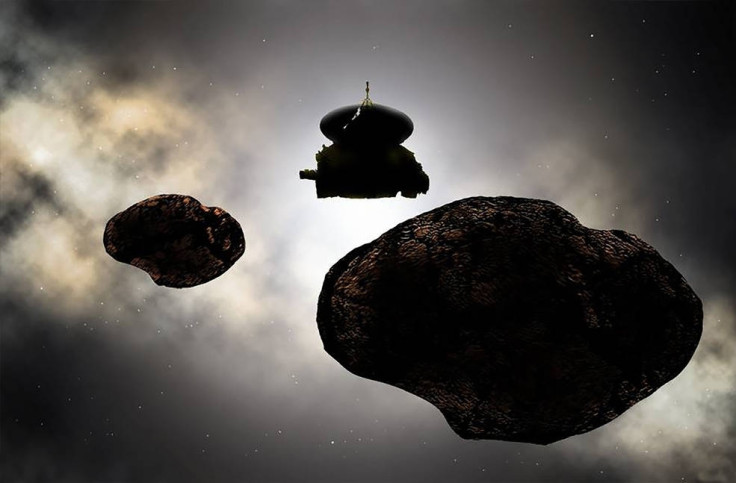This object will become the most distant ever visited by a spacecraft - and Nasa wants you to name it
In 2019, Nasa's New Horizons spacecraft will fly past (486958) 2014 MU69.

On January 1, 2019, Nasa's New Horizons spacecraft will fly past a small, distant object – currently known as (486958) 2014 MU69 – in the outer regions of the solar system, 4 billion miles away from Earth.
The flyby will set the record for the most remote object ever to be visited by human technology. However, Nasa felt its temporary title – which references when the Hubble Space Telescope first discovered it – might not be suitable for the occasion. It is currently referred to as MU69, for short.
So now, the space agency is asking the public to suggest their own nickname ideas and vote for their favourites. The New Horizons team and Nasa will then review the best ideas before announcing a winner in January 2018.
"New Horizons made history two years ago with the first close-up look at Pluto, and is now on course for the farthest planetary encounter in the history of spaceflight," said Thomas Zurbuchen, from Nasa's Science Mission Directorate in Washington. "We're pleased to bring the public along on this exciting mission of discovery."
Part of the reason why astronomers are holding out on assigning MU69 a formal name is that no one is quite sure exactly what it is. Nasa thinks the icy world may be a single body, a pair, or its own miniature system.
After the flyby, when more is revealed about the object, Nasa will work with the International Astronomical Union to assign it a formal name.
MU69 is located in a vast, distant and unexplored region of the solar system known as the Kuiper Belt, which lies beyond the orbit of Neptune. This ring of trillions of icy objects – which are all orbiting the Sun – is made up of remnants of the early solar system. It resembles the asteroid belt but is 20 times wider and 20 to 200 times more massive.
Most of the objects in the Kuiper Belt are small and composed largely of frozen ices such as methane, ammonia and water. However, it is also home to larger and rocky objects, including three officially recognised dwarf planets: Pluto, Haumea and Makemake. It is estimated that there are hundreds of thousands of icy bodies in the belt that are larger than 62 miles across.
New Horizons launched on January 19, 2006, flying past Jupiter as it travelled towards Pluto. On July 14, 2015, it made the closest ever approach of the dwarf planet.
Voting will stay open until 1 December. You can submit names, read current suggestions and vote for your favourites at:





















